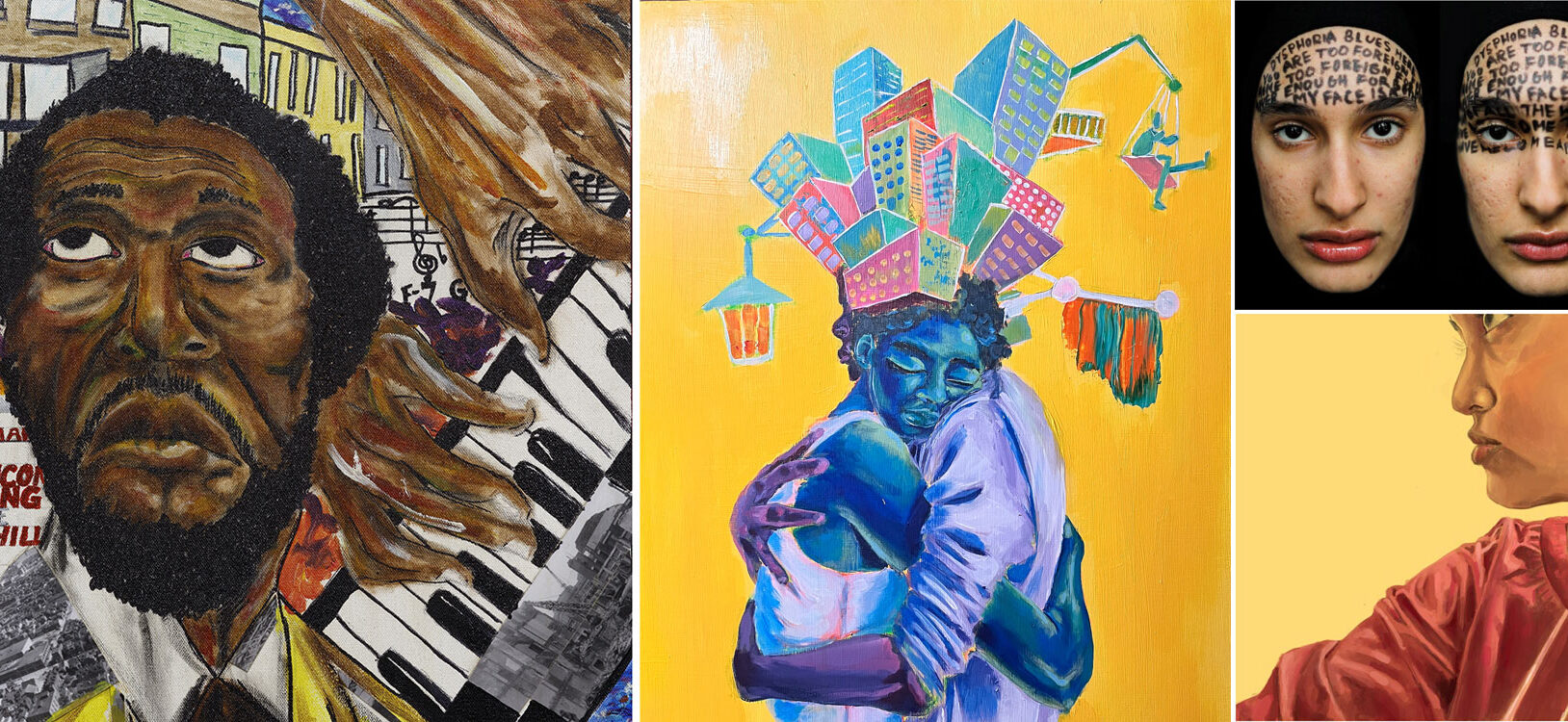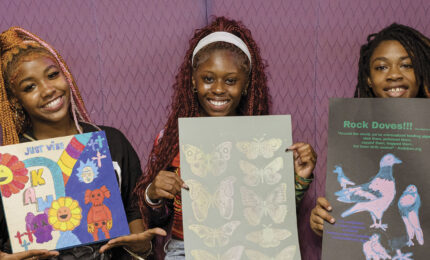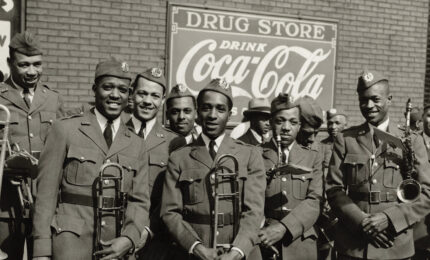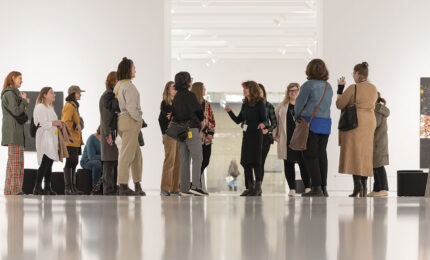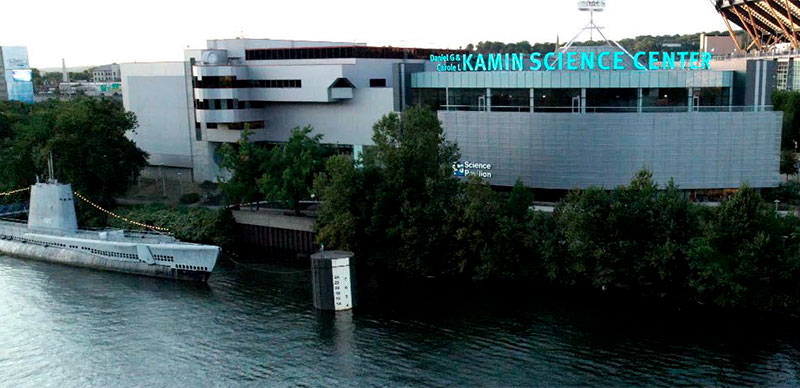At 13, Sasha Igwe and her family packed up and moved from Ypsilanti, Michigan, to Monroeville, Pennsylvania.
Her old neighborhood about an hour outside of Detroit was demographically diverse, with racial minorities accounting for more than a third of the population, according to Census figures. It was a startling contrast to her comparatively white and homogeneous new home.
“It was a complete culture shock for me,” says Igwe, who is now 34 and goes by the artist name “Ifeoma.”
While her close-knit family was often a saving grace, “for me, it was difficult to find where I fit in” in Pittsburgh.
During those challenging times, Igwe found solace in her art, which she is now sharing as part of Envisioning a Just Pittsburgh: An Inclusive Call for Art. Launched last June, the initiative welcomed artists throughout southwestern Pennsylvania to share their visions for a just and equitable Pittsburgh.
Organized by Carnegie Museums of Pittsburgh in partnership with Carnegie Library of Pittsburgh, the University of Pittsburgh, 1Hood Media, and the August Wilson African American Cultural Center, the call for art received more than 160 submissions, with a dozen contest winners spread across six categories, including visual, literary, performance, interdisciplinary, and youth (18 and under) arts.
“We aim for equity, inclusion, and justice in our city. When we acknowledge their absence, it’s essential to take a moment to contemplate what a Pittsburgh characterized by these principles might resemble,” says Gina Winstead, vice president for inclusion, diversity, equity, and accessibility at Carnegie Museums. “I was curious to explore if we could create an articulation through art of what that might look, sound, and feel like from the community’s voice.”
“In my mind, the idea of a world reconciled is that feeling of integration. The ability to actually embrace and accept and just fully be with one another in a way that is healthy and that is fulfilling for all parties involved.”
–Sasha Igwe
View the winners of the 2023 Inclusive Call for Art
The project was partly inspired by the ongoing inequities plaguing Pittsburgh’s minority communities. A 2019 report by researchers at the University of Pittsburgh spotlighted harrowing disparities: 40 percent of Pittsburgh’s Black adult women and 27 percent of Black men lived in poverty, compared to 8 percent of white men.
Igwe’s painting, A World Reconciled, which earned second place in the adult visual art category, features a semi-realistic portrait of two people embracing, a crown of highrise buildings and cityscapes sprouting from their heads. She notes that her piece is a visual representation of how, when we encounter another individual, we are physically confronted with the internal world they are carrying.
“In my mind, the idea of a world reconciled is that feeling of integration,” she says. “The ability to actually embrace and accept and just fully be with one another in a way that is healthy and that is fulfilling for all parties involved.”
Now living in Shaler Township, Igwe also works as an attendant and art handler with several galleries around Pittsburgh.
Lee Price, a 41-year-old Penn Hills resident, won first prize in the visual arts category for his mixed-media portrayal of Pittsburgh jazz legend Ahmad Jamal. Price’s inspiration came from an article he read about the challenges of redevelopment in the Lower Hill District, a historically Black neighborhood and touchstone in Pittsburgh’s jazz history.
The piece portrays Jamal, looking up as if to a skyscraper, surrounded by historic images of the Lower Hill with protest signs calling for affordable housing.
“I was captivated by the old black-and-white photos,” Price told the Tribune-Review. “Working Downtown for the last 13 to 14 years of my IT career, it was wild to see how much has changed and what it used to look like Downtown and within the surrounding area.”
Redevelopment in Pittsburgh has often led to the displacement of minority communities, such as when much of the Lower Hill was cleared out to make room for the Civic Arena in 1961. And whether it’s lack of representation in museum galleries or unequal access to education and social services, Pittsburgh has a long history of underserving minority communities. Winstead says it was important that any initiative like this, where those disparities are highlighted and discussed, be a collaborative process across many different stakeholders.
“We are ecstatic to be part of a collaborative process that has led to the celebration of such a diverse and insightful group of artists and are grateful to our partners for the intention and care that shaped the process,” says Deborah Rogers, director of inclusion, diversity, equity, and accessibility for Carnegie Library of Pittsburgh.
A series of showcases and performances ran throughout February, including a showcase of all categories of art winners at Carnegie Museum of Natural History.
“All of the participating artists have used their art to encourage, challenge, and expand our perspective of an equitable Pittsburgh,” says Kit Ayars, director of the Center for Creativity for the University of Pittsburgh.
A fair and just world where everyone can thrive “starts with a vision,” says Ron Idoko, founding director of the Racial Equity Consciousness Institute, which was a co-presenter. Idoko emphasized the transformative potential of initiatives like this. Eradicating racism and creating a just world is an intentional act, Idoko says, that begins with giving yourself a “North Star” and envisioning what a new world looks and feels like.
“We have to be able to foster ideas that catalyze new visions, give people an opportunity to see something different, so that they feel empowered to work towards that new thing,” he says. “We need to give people an opportunity to really speak to the vision, to speak to the future that we all want to live in.”
